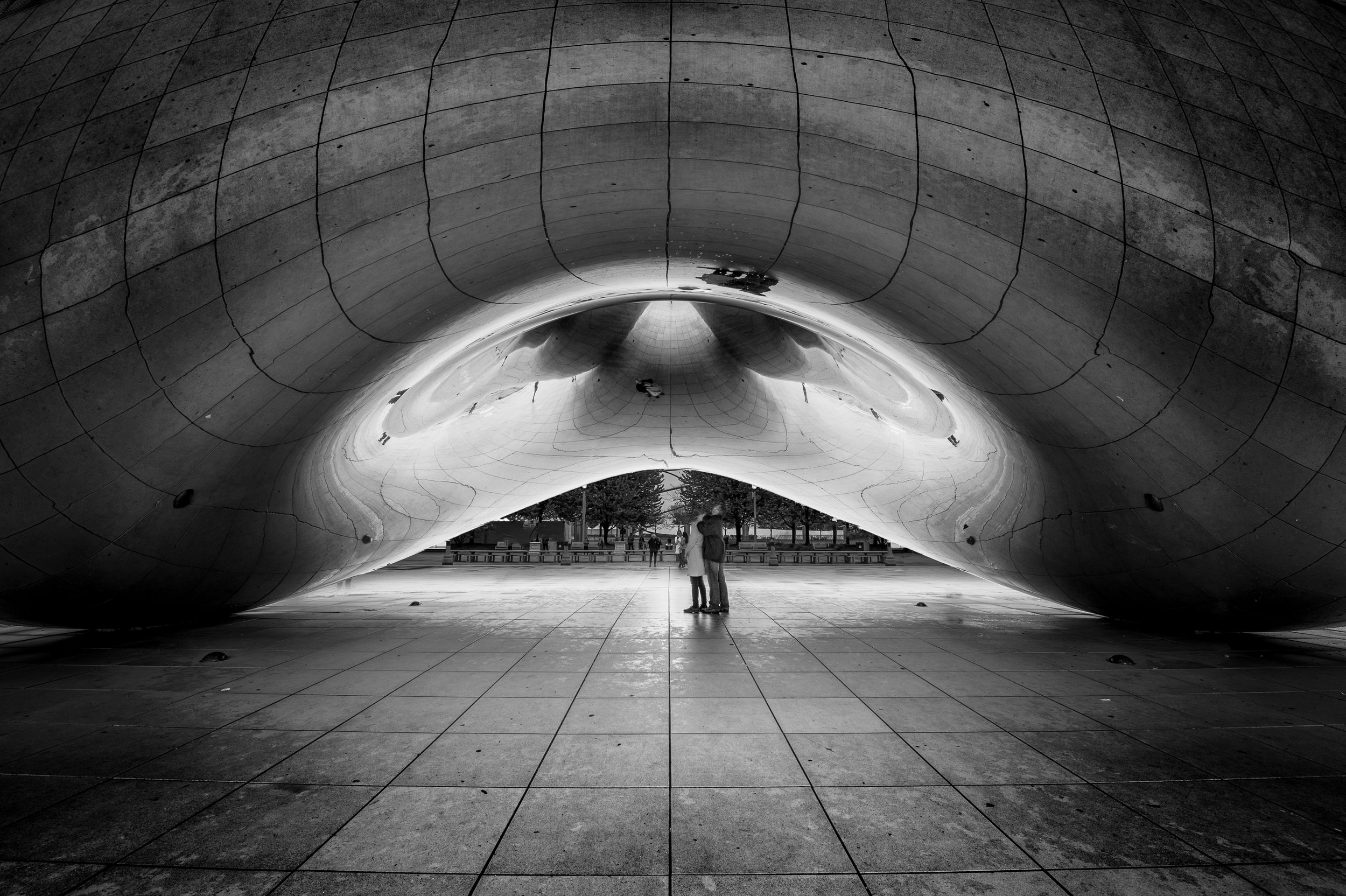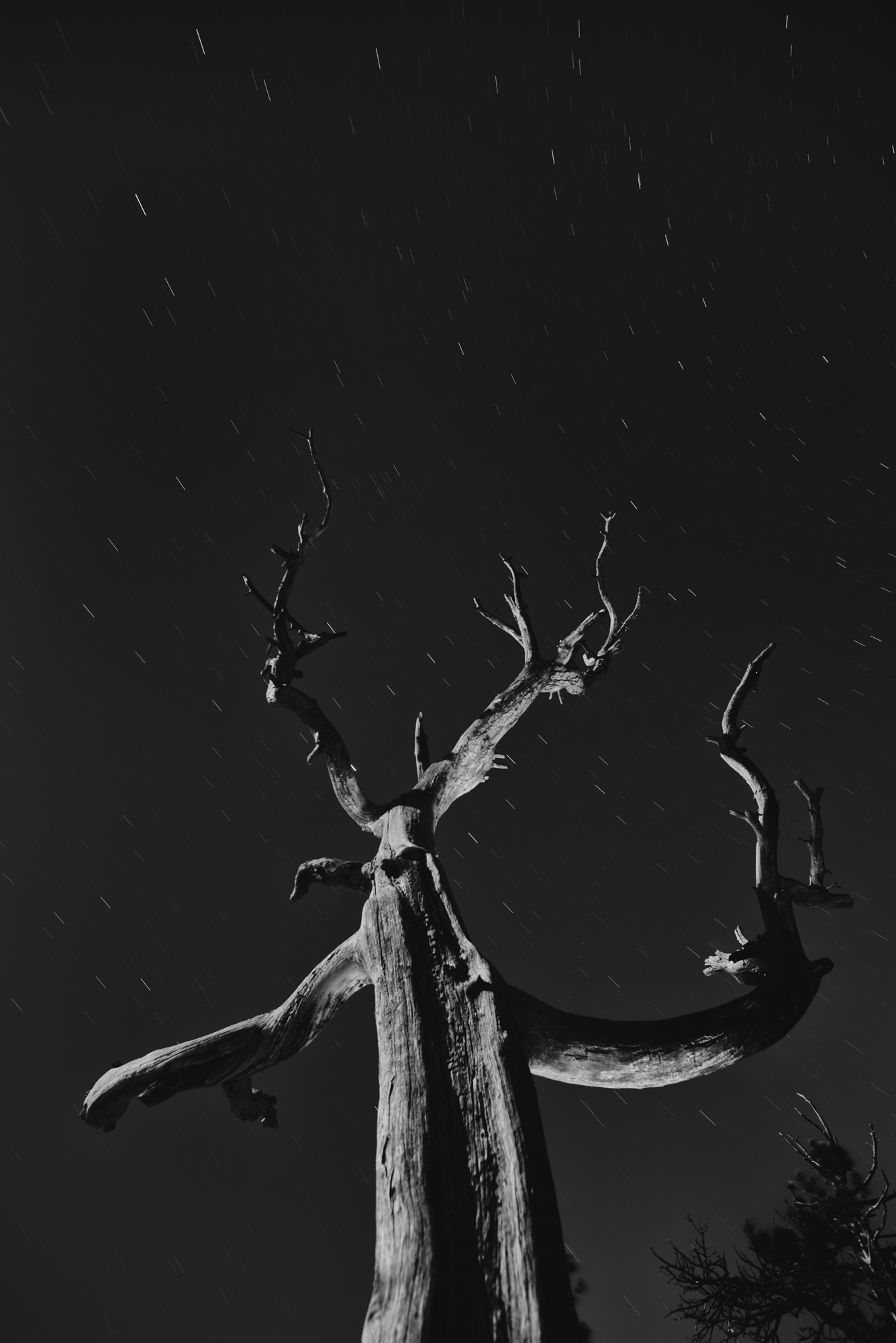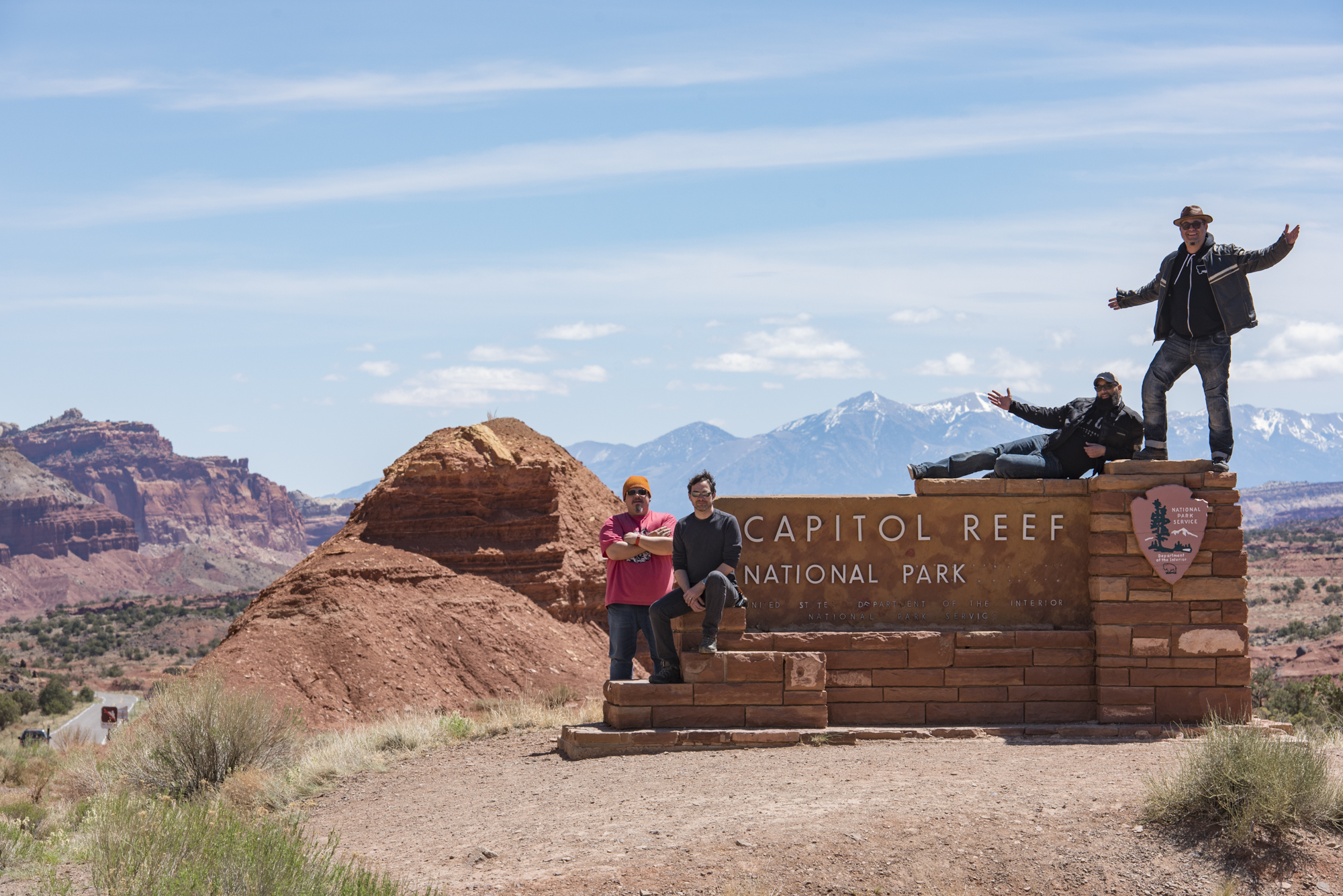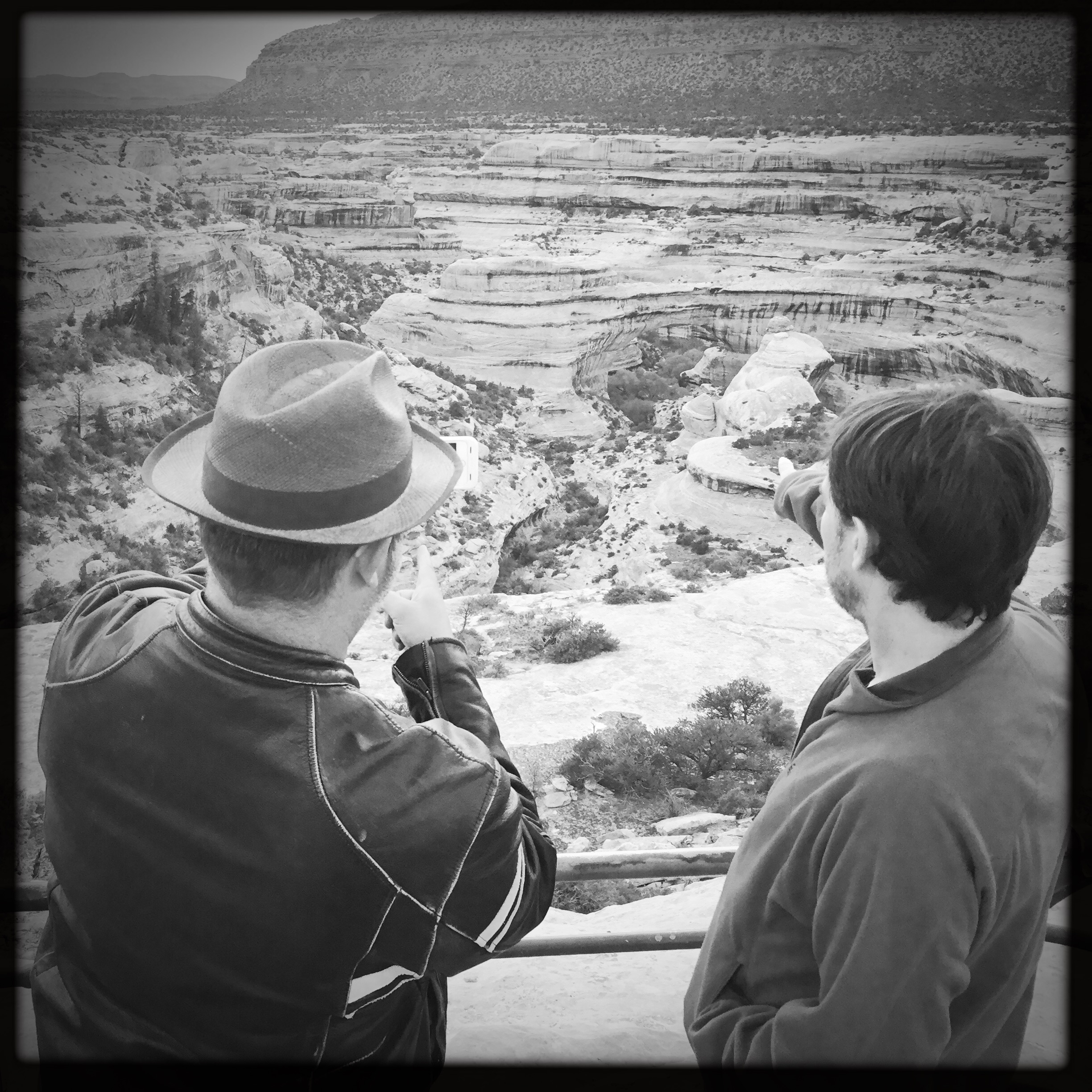2016 was a great year for the national parks. The centennial really put the parks back into the minds of Americans, resulting in increased visitation and awareness. For more information, see the State of Utah's “Mighty 5” national television ads promoting their national parks, or the Suburu “What We Leave Behind” ad campaign, or the REI “Centennial Adventure” outreach, or the explosion of the Chimani park-guide apps, or the yearlong coverage of parks by National Geographic, or the serial “On the Trail” features on "CBS Sunday Morning," or the sudden popularity of the TV show “Rock the Park.” Et al.
So I’m intrigued to see what 2017 brings. Will interest in the parks remain at these levels, or diminish as the glow of the centennial subsides?
And what will the ramifications be? This year’s record attendance also produced some wears and tears, something the parks already had enough of before. The uptick in visitor fees may help pay for some of that maintenance and facilities backlog, but will next year’s probable downtick create an even greater shortfall for an already cash-strapped park system?
Who wouldn't want to help protect a view over heaven? Olympic National Park, © 2016 Chris Nicholson.
Another thought, which despite first appearance, I promise is related to the first: As national park photographers, as nature photographers, we sure do owe something to these wonderful places. They are our subject, our inspiration, our muse. As such, we should feel proud of them. We should feel protective of them. And we should feel an obligation to leave them better places than we found them, to ensure that they can be our muse again, and that they can inspire future generations of artists in our stead.
But how can we do this, aside from leaving only footprints (and hopefully not even those)?
Well, there certainly are means to do so. So as the old year winds down and we enter this season of giving and of giving back, I made a list of ways that we, as photographers, as lovers of these landscapes and wildernesses (and, of course, the pristine night skies that canopy them), can help support the national parks now and for the years and decades to come.
One way is to support the organizations dedicated to the cause of preserving these wild spaces. That support could be financial, but it could also be time volunteered, or it could be the creation of intellectual property (e.g., in our case, photography). Here are a few organizations to consider:
National Park Foundation
Chartered by Congress in 1967, the National Park Foundation is the official charitable partner of the National Park Service. The foundation raises private funds to support conservation and preservation efforts, to spread the word about the parks, and to inspire young Americans to learn to love these lands too. They also have a great free email newsletter that features articles about the parks. www.nationalparks.org
National Parks Conservation Association
These folks have been at it for a while, long enough to start getting ready to celebrate their own centennial. Founded in 1919, the National Parks Conservation Association (NPCA) has been a strong and independent voice supporting our country’s greatest idea. Their efforts range from in-park support to legal defenses to assist public lands to lobbying for pro-parks policy and legislation in Washington, D.C. They also publish the excellent National Parks magazine, a subscription to which is a benefit of becoming a member. www.npca.org
National Park Trust
The National Park Trust is dedicated to land acquisition and preservation, along with conservation projects in 45,000 acres of public lands in 33 states. Perhaps more importantly, they also work to cultivate a love of the parks in the youngest generation, through two national youth programs, the Buddy Bison school program and Kids to Parks Day—because, as they say, “kids need parks and parks need kids.” www.parktrust.org
In Texas' Big Thicket National Preserve, Ranger Alex Halbrook leads and teaches school children who are part of the NPT's Buddy Bison program. The educational outreach program provides parks, wilderness and STEM opportunities to K8 kids in more than 60 schools across the U.S. Photo courtesy of the National Park Trust.
Sierra Club
Founded by noted naturalist (and meme star) John Muir, and staunchly supported by Ansel Adams, the Sierra Club is certainly one of the oldest (perhaps the oldest) group supporting the preservation of the wild. They also claim to be the nation’s largest grassroots environmental organization, with 2.4 million members and supporters. They help protect over 250 million acres of wilderness, host over 20,000 outings and events per year, and their reach and government lobbying power is well respected. www.sierraclub.org
Friends of Parks Associations
Most (if not all) of the parks are associated with a local organization that supports that specific park. These tend to be the groups that benefit from merchandise sales at the park gift shops, and the ones that get their hands dirty helping to blaze trails, or restore plantlife environments, and so on. Examples include the Yellowstone Forever, Conservancy of Cuyahoga Valley National Park and Friends of Big Bend National Park. If you live near a national park, or frequent a specific one, orhave an affinity for a specific park for whatever reason, these micro-organizations are a great place to start helping. For info on the many that exist, see the Friends Group Directory collated by the National Park Service.
Volunteers help with plantings at Glacier National Park. NPS photo by Jacob W. Frank.
Also, keep in mind that another way to help all or any of these organizations is to spread the word about them. These days we all have our own media reach, so can share the links and stories of these groups on Facebook, Twitter, etc.
Congress
On the federal level, national parks have been underfunded for years—the reported maintenance and repair backlog is about $12 billion. Not only does that endanger the parks we have, but is also a good argument for not creating new parks, which is an unfortunate side effect.
How can you help with this, other than donating time and money to those organizations that try to help fill in the financial gaps? Write to your Congressperson to encourage the restoration of lost funding. Despite the massive list of deferred maintenance, in the first half of this decade the National Park Service budget was reduced by 12 percent, or $364 million. That’s understandable during cash-strapped economic periods, but surely in better times we, as a country, can start finding ways to recommit to this important shared resource.
(Along the same lines, the NPCA offers a "Guide for Meeting With Legislators," should you be fortunate enough to do so.)
Annual Pass
Buy an American the Beautiful pass even if you don't need it. If you travel to the parks a lot, the pass is a no-brainer—you’ll pay it off in about 3-4 visits. For one year, the pass garners you free entry to all national parks, national monuments, national historic sites, national wildlife refuges, national forests and grasslands, and all units managed by the Bureau of Land Management, Bureau of Reclamation and U.S. Army Corps of Engineers. That’s a lot of places. But even if you visit just one park per year, buying an annual pass contributes directly to the system, helping to support something you obviously care about.
Photography
Finally, you can consider donating photos or photography to the park. Anyone reading this knows the value of a good photograph. If donating your work is not your thing for business reasons, I totally understand that. But if you’re the type of photographer who picks, say, one organization to help out, then a park foundation or association is a worthy one to consider. A place like Yellowstone doesn’t need the photo help, but smaller parks with minimal budgets, staff and infrastructure may appreciate the gesture, as would nonprofits that genuinely try to reserve their cash for their causes.
I read something recently that encouraged people to think of the parks not as "federal lands," but rather as shared resources, as national treasures. I further that sentiment by suggesting that because we co-own these places, we're all responsible for helping to sustain them.

























































